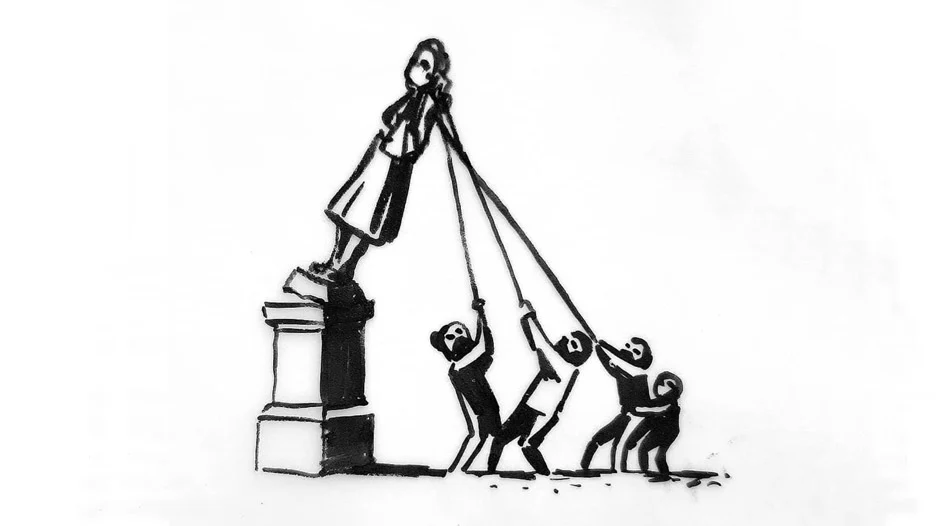On June 7, 2020, amidst the global Black Lives Matter movement, Bristol witnessed a bold act of defiance when the statue of Edward Colston, a 17th-century slave trader, was toppled by a group of protesters. This event did not happen in isolation; it was part of a growing wave of activism against systemic racism and the glorification of historical figures linked to colonialism and slavery. The statue, which had long been a point of contention for over 30 years, symbolised an uncomfortable history that many felt was overdue for reckoning.
With a collective roar of discontent, demonstrators dragged the statue through the streets of Bristol before heaving it into the River Avon. The act was celebrated by many as a powerful statement against injustice, but it also spurred debates about history and which narratives should be honoured in public spaces.
Banksy’s Response: Art as Activism
In the wake of this dramatic event, the elusive street artist Banksy, who hails from Bristol, responded with both creativity and social consciousness. Having emerged on the Bristol graffiti scene in the 1990s, Banksy has long been a voice of dissent and commentary in his hometown.
Banksy responded to the toppling of the statue of Edward Colston by proposing an idea on 11th June on instagram for a memorial that would confront Bristol’s history of slavery head-on. His concept includes the remains of the toppled Colston statue alongside life-size bronze statues depicting the protesters who brought it down. Banksy’s idea aims to create a dialogue about the past and present, honouring those who fought against oppression while reminding us of the injustices that persist.
“What should we do with the empty plinth in the middle of Bristol?” said Banksy on Instagram. “Here’s an idea that caters for both those who miss the Colston statue and those who don’t.”
“We drag him out the water, put him back on the plinth, tie cable round his neck and commission some life size bronze statues of protestors in the act of pulling him down,” continued Banksy.
“Everyone happy. A famous day commemorated.”

Image copyright Banksy
Banksy also responded to the toppling of the statue of Edward Colston a year later in December 2021 by designing a series of T-shirts to serve as protest pieces while also raising funds for the four individuals facing legal repercussions related to the statue’s removal. These T-shirts at £25 became a symbol of rebellion and a showing of community support highlighting Banksy’s commitment to social justice beyond mere art.
In a post on Instagram, Banksy said: “Next week the four people charged with pulling down Colston’s statue in Bristol are going on trial. I’ve made some souvenir shirts to mark the occasion. Available from various outlets in the city from tomorrow. All proceeds to the defendants so they can go for a pint.”
A Legacy of Dialogue and Reflection
Banksy’s artistic and activist responses to the toppling of the Colston statue spark essential conversations about how society remembers its history. His work encourages a collective reckoning with the past while advocating for a more inclusive narrative that recognises marginalised voices.
The events surrounding the toppling of the statue and Banksy’s subsequent actions underline a pivotal moment in Bristol’s—and indeed, the UK’s—ongoing discussion about race, history, and the legacies of colonialism. As we navigate these complex issues, art continues to play a crucial role in fostering dialogue, reflection, and, ultimately, change. With his roots deeply embedded in Bristol, Banksy remains a vital part of this evolving conversation.